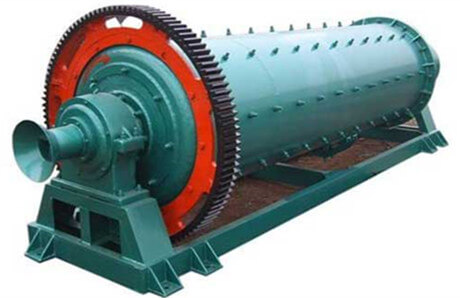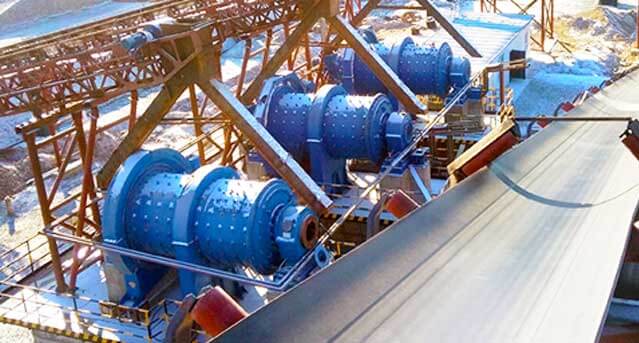- Home
- Products
- Solutions
- Resource Library
- About Us
- + 86-18736301510

Rod mills are suitable for brittle materials. Additionally, due to their low incidence of over-grinding, they are also suitable for tungsten ore, tin ore, or other rare metal ores, and are typically used in reprocessing or magnetic separation production lines.
Rod mill is one of the commonly used grinding equipment in concentrator, which mainly includes three main types: overflow, end peripheral discharge and center peripheral discharge. Among them, overflow rod mill is the most widely used. Its structure is very similar to overflow ball mills, but use long rods for grinding media. In order to prevent the grinding rod from being disordered and tangled, he length to diameter ratio is maintained at 1.4 to 1.6.

The maximum feed of the rod mill is about 50mm, and produce a product in the size range of 2-0.5mm. The output of rod mill is 2-3 times higher than that of ball mill, which can effectively reduce the grinding cost. The product particle size of overflow rod mill is finer than the other two. It is usually used to grind the crushed materials and then supply them to the ball mill.
Rod mill is mainly composed of motor, main reducer, transmission part, cylinder part, main bearing, slow transmission part, feeding part, discharging part, annular seal, gear, foundation part, etc.
When working, the motor drives the cylinder to rotate through the reducer. When the cylinder rotates, the crushed ore and steel bar in the cylinder are brought to a certain height by the lining plate under the action of friction and centrifugal force. Due to the action of gravity, they will be thrown and spilled, and the ore will be crushed gradually under the action of impact and grinding.
The crushed ore is discharged out of the barrel through the discharge part. Rod mill is a grinding equipment that can work continuously for 24 hours.
The speed of the rod mill is generally 60 ~ 68% of the critical speed, not more than 70%. There are two forms of dry mill and wet mill, which can be selected according to the actual situation of users. For quartz sand, dolomite, marble, granite, perlite and other products, magnetic separator can be used to remove iron.
1. Controllable Discharge Particle Size
One reason for choosing rod mill is the particle size of finished products. For quartz sand grinding, the discharge particle size is usually between 40 mesh and 120 mesh.
2. Grinding with Scrubbing Function
The use of rod mill to treat quartz sand can play the role of scrubbing to a certain extent and help remove some impurities.
3. Uniform Product Particle Size
The grinding function of the rod mill is carried out through the line contact between the rods extending along the length of the mill, which can make the particle size of the discharge more uniform.
4. Reasonable Design and long Service life
The use of grinding rubber backing between the rod mill lining plate and the mill shell can reduce wear and prolong service life.
| Model | Cylinder Specification (mm) | Cylinder Speed (r/min) | Feed Size (mm) | Discharge Size (mm) | Capacity (t/h) | Power (kw) | Weitht (t) | |
| Diameter | Length | |||||||
| MB0918 | 900 | 1800 | 29.0-31.3 | ≤25 | 0.833-0.147 | 0.62-3.2 | 18.5 | 5.9 |
| MB0924 | 900 | 2400 | 29.0-35.4 | ≤25 | 0.833-0.147 | 0.81-4.3 | 22 | 6.7 |
| MB1214 | 1200 | 2400 | 27.0-34.0 | ≤25 | 0.833-0.147 | 1.1-4.9 | 30 | 13.9 |
| MBS1530 | 1500 | 3000 | 26.5-29.8 | ≤25 | 0.833-0.147 | 2.4-7.5 | 75 | 19.8 |
| MBZ2130 | 2100 | 3000 | 19.0-21.0 | ≤25 | 0.833-0.147 | 14-35 | 155 | 46.5 |
| MBZ2136 | 2100 | 3600 | 19.0-21.0 | ≤25 | 0.833-0.147 | 19-43 | 180 | 48.7 |
| MBZ2736 | 2700 | 3600 | 17.2-18.5 | ≤50 | 0.833-0.147 | 32-86 | 380 | 92.5 |
| MBZ2740 | 2700 | 4000 | 17.2-18.5 | ≤50 | 0.833-0.147 | 32-92 | 400 | 95 |
Please write down your requirement and contact details in the following form. You can also send a message to us by this sales@lyldkj.com, we will reply to you within 24 hours.